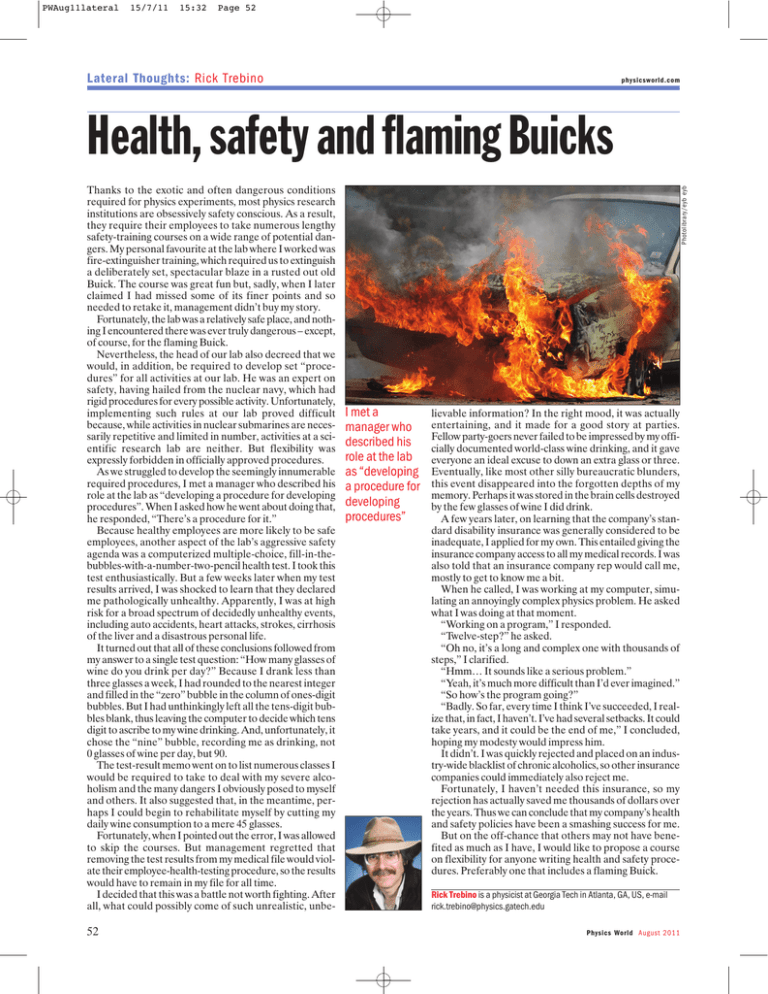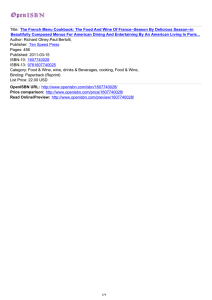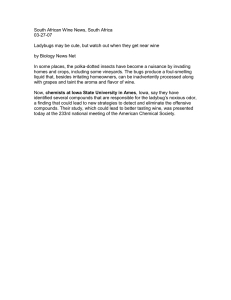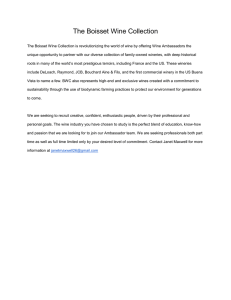Thanks to the exotic and often dangerous conditions
advertisement

PWAug11lateral 15/7/11 15:32 Page 52 Lateral Thoughts: Rick Trebino physicsworld.com Thanks to the exotic and often dangerous conditions required for physics experiments, most physics research institutions are obsessively safety conscious. As a result, they require their employees to take numerous lengthy safety-training courses on a wide range of potential dangers. My personal favourite at the lab where I worked was fire-extinguisher training, which required us to extinguish a deliberately set, spectacular blaze in a rusted out old Buick. The course was great fun but, sadly, when I later claimed I had missed some of its finer points and so needed to retake it, management didn’t buy my story. Fortunately, the lab was a relatively safe place, and nothing I encountered there was ever truly dangerous – except, of course, for the flaming Buick. Nevertheless, the head of our lab also decreed that we would, in addition, be required to develop set “procedures” for all activities at our lab. He was an expert on safety, having hailed from the nuclear navy, which had rigid procedures for every possible activity. Unfortunately, implementing such rules at our lab proved difficult because, while activities in nuclear submarines are necessarily repetitive and limited in number, activities at a scientific research lab are neither. But flexibility was expressly forbidden in officially approved procedures. As we struggled to develop the seemingly innumerable required procedures, I met a manager who described his role at the lab as “developing a procedure for developing procedures”. When I asked how he went about doing that, he responded, “There’s a procedure for it.” Because healthy employees are more likely to be safe employees, another aspect of the lab’s aggressive safety agenda was a computerized multiple-choice, fill-in-thebubbles-with-a-number-two-pencil health test. I took this test enthusiastically. But a few weeks later when my test results arrived, I was shocked to learn that they declared me pathologically unhealthy. Apparently, I was at high risk for a broad spectrum of decidedly unhealthy events, including auto accidents, heart attacks, strokes, cirrhosis of the liver and a disastrous personal life. It turned out that all of these conclusions followed from my answer to a single test question: “How many glasses of wine do you drink per day?” Because I drank less than three glasses a week, I had rounded to the nearest integer and filled in the “zero” bubble in the column of ones-digit bubbles. But I had unthinkingly left all the tens-digit bubbles blank, thus leaving the computer to decide which tens digit to ascribe to my wine drinking. And, unfortunately, it chose the “nine” bubble, recording me as drinking, not 0 glasses of wine per day, but 90. The test-result memo went on to list numerous classes I would be required to take to deal with my severe alcoholism and the many dangers I obviously posed to myself and others. It also suggested that, in the meantime, perhaps I could begin to rehabilitate myself by cutting my daily wine consumption to a mere 45 glasses. Fortunately, when I pointed out the error, I was allowed to skip the courses. But management regretted that removing the test results from my medical file would violate their employee-health-testing procedure, so the results would have to remain in my file for all time. I decided that this was a battle not worth fighting. After all, what could possibly come of such unrealistic, unbe- 52 Photolibrary/eyb eyb Health, safety and flaming Buicks I met a manager who described his role at the lab as “developing a procedure for developing procedures” lievable information? In the right mood, it was actually entertaining, and it made for a good story at parties. Fellow party-goers never failed to be impressed by my officially documented world-class wine drinking, and it gave everyone an ideal excuse to down an extra glass or three. Eventually, like most other silly bureaucratic blunders, this event disappeared into the forgotten depths of my memory. Perhaps it was stored in the brain cells destroyed by the few glasses of wine I did drink. A few years later, on learning that the company’s standard disability insurance was generally considered to be inadequate, I applied for my own. This entailed giving the insurance company access to all my medical records. I was also told that an insurance company rep would call me, mostly to get to know me a bit. When he called, I was working at my computer, simulating an annoyingly complex physics problem. He asked what I was doing at that moment. “Working on a program,” I responded. “Twelve-step?” he asked. “Oh no, it’s a long and complex one with thousands of steps,” I clarified. “Hmm… It sounds like a serious problem.” “Yeah, it’s much more difficult than I’d ever imagined.” “So how’s the program going?” “Badly. So far, every time I think I’ve succeeded, I realize that, in fact, I haven’t. I’ve had several setbacks. It could take years, and it could be the end of me,” I concluded, hoping my modesty would impress him. It didn’t. I was quickly rejected and placed on an industry-wide blacklist of chronic alcoholics, so other insurance companies could immediately also reject me. Fortunately, I haven’t needed this insurance, so my rejection has actually saved me thousands of dollars over the years. Thus we can conclude that my company’s health and safety policies have been a smashing success for me. But on the off-chance that others may not have benefited as much as I have, I would like to propose a course on flexibility for anyone writing health and safety procedures. Preferably one that includes a flaming Buick. Rick Trebino is a physicist at Georgia Tech in Atlanta, GA, US, e-mail rick.trebino@physics.gatech.edu Physics World August 2011


